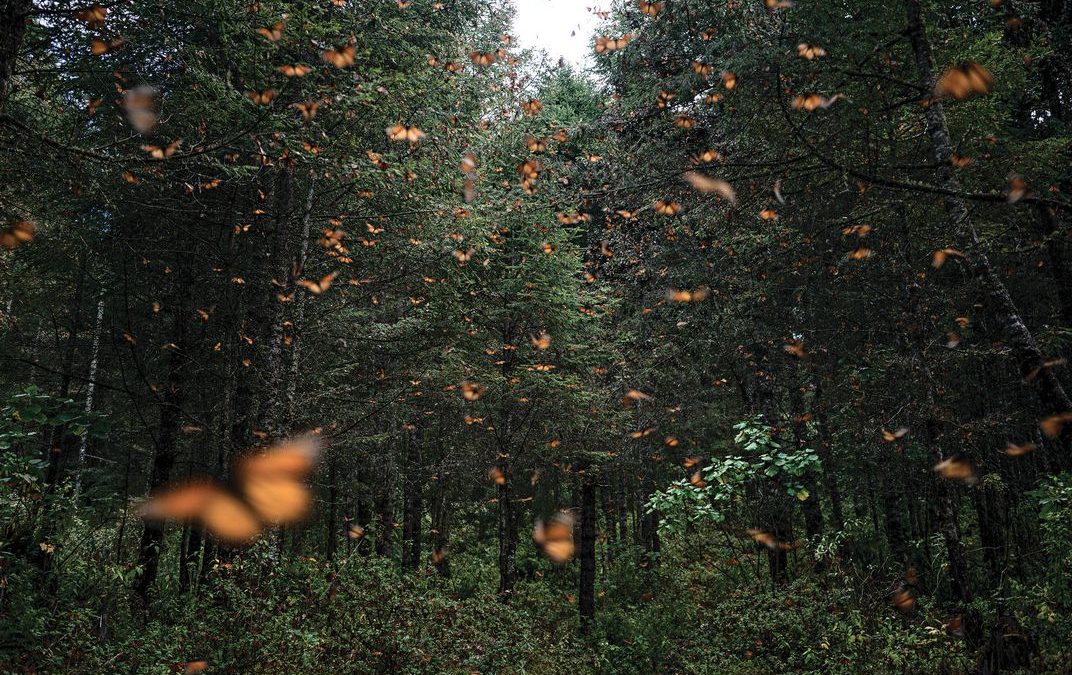One of nature’s most extraordinary spectacles unfolds in the 10,000-foot-high conifer forests of Michoacán, Mexico. In mid-November, swirling orange-and-black clouds appear in the skies above the Monarch Butterfly Biosphere Reserve, a 139,019-acre sanctuary carved out of the Transvolcanic Belt by the Mexican government in 2008. Millions of butterflies alight on oyamel firs, pines and junipers. As the late-year temperatures dip toward freezing, the beautifully patterned insects fall into a sort of hibernation, after their several-thousand-mile migration. “The area has the microclimate the monarchs need to slowly consume their stored fat and stay alive,” says Alfonso Alonso, a conservation biologist and butterfly expert at the Smithsonian’s National Zoo & Conservation Biology Institute.
Read more from Joshua Hammer with The Smithsonian Magazine here.

